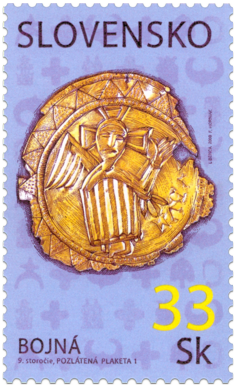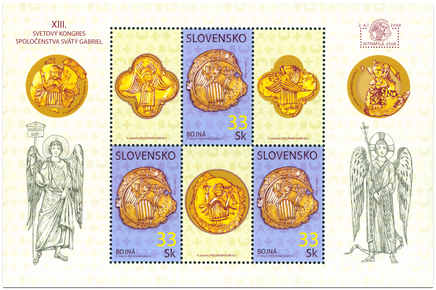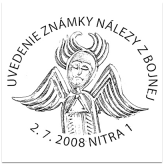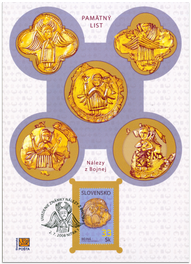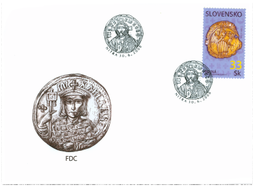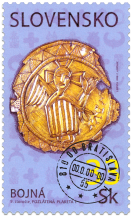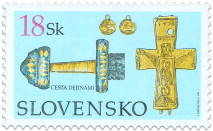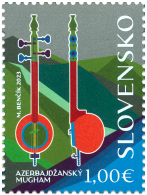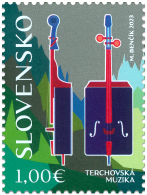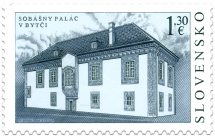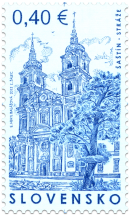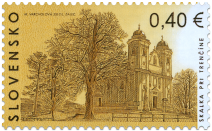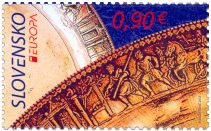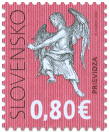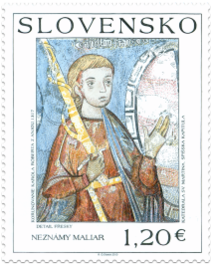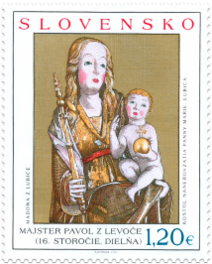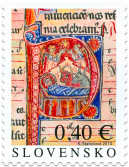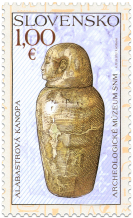This product is not for sale
This product is part of the following products
426 Date of issue
30.06.2008 Face value
33.00 Sk
© Slovak Post, 2008 Gilded Copper plaques, measuring from 13 to 15 cm in diameter, discovered at the Great Moravian hill fort Bojná I. – Valy are among the most significant Great Moravian art findings from the 9th century. All six plaques are decorated with figural scenes, two of them have unique inscriptions in Greek or Latin majuscule. The stamp depicts plaque No. 1 with a winged Christ “the Angel of Great Council”, which is a rare Christian iconographical motive. Its oldest known graphical depiction is known from illuminated manuscript of the Homilies of Gregory of Nazianzus (Bibliothèque nationale Paris, Gr. 510), which was commissioned by Constantinople Patriarch Photius for the Byzantine emperor Basil I in 880 886. The coupons present other plaques from the treasure: plaque no. 2 depicts an archangel holding labarum, an analogy to this figure come from the Great-Moravian belt decoration from grave No. 240 discovered in the Great Moravian hill fort “Val” near Mikulčice; plaques no. 3 and 4 depict angels; plaque no. 5 illustrates Seraph, the “fire angel”, and plaque no. 6 a tetramorph angel Cherub. Angels on plaques represent different angelic orders, according to the Byzantine theologist Pseudo Dionysios Areopagite at the turn of the 5th and the 6th century in the work on Celestial Hierarchy (De caelesti Hierarchia, Chap. 4). Saint Constantine-Cyril knew this work by heart and since Gregory of Nazianzus was his literary pattern, it follows that the plaques relate to theological culture from the Byzantine imperial court, which this scholar introduced to the Great Moravian Empire. The set of plaques with the iconography of angels was probably part of a reliquary, in the Byzantium decorated with angels, e.g. Staurotheca from Limburg, a reliquary made for the emperor Roman I. with a relic of St. Cross from the 10th century. The FDC engraving uses the reverse of the Byzantine solid, with the portrait of Emperor Michael III holding a labarum. The coin was found in grave no. 480 also in Mikulčice, and its head – as used on the FDC cancellation – portrays Christ with cross nimbus. Martin Vančo
Show less© 2024 POFIS - Postal philatelic service. All rights reserved

